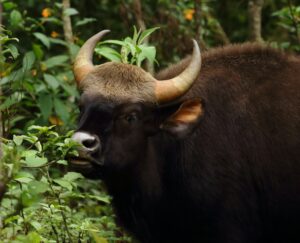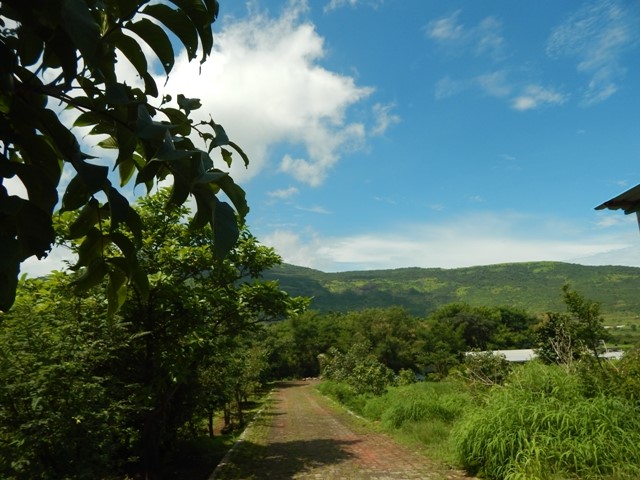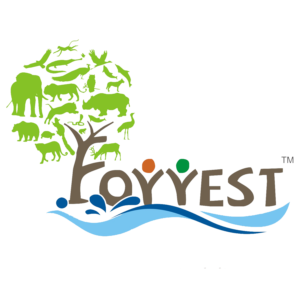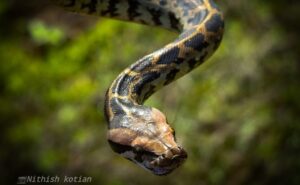

Today when rapid urbanization, habitat fragmentation, habitat destruction and change in land use are challenging ecosystem integrity and conservation, areas which are still green, support biodiversity and provide various ecological services become crucial.
Biological diversity is a global asset with colossal value. It has been declared as a legally binding treaty- the Convention on Biological Diversity (CBD) with three main goals as –Conservation of biodiversity; Sustainable use of biodiversity; and Fair and equitable sharing of the benefits arising from the use of genetic resources.
Aditi Learning Centre is one such Private Protected Area, which support biological diversity & provide ecosystem services, amid the more & more concretized setting.
It is located in Kusgaon village, in Kamshet, 48 km from Pune city.
Since 2009, Aditi Learning Center (ALC) is working on grass root level for supporting the intellectual, emotional and social growth of young women who desire to complete their education. Modules such as understanding sexuality, human migrations, origins of the earth & waste management help make the connections between the pockets of knowledge from their text books and real-life experiences.
Interactions with guest speakers is a regular part of learning, which create appreciation for people who have stepped out of boundaries and raise questions through their work and life.
Organic farming is also being practiced at ALC where vegetables are grown for student’s meal.
Apart from this brilliant work, Aditi learning center area is also a model for “Private Protected Area” (PPA).
FORREST conducted Ecological Research at Aditi Learning Centre from January 2016 to Jan 2018 focusing on biodiversity, ecosystem services and factors affecting these. Season wise surveys were conducted throughout the period.
This was the baseline study to assess the ecology of these 11 acres of land. The baseline study outcomes are flora and fauna inventory, ecologically important features of the area, ecologically important flora and fauna species, ecological interventions and conservation management plan for the area.
Taxa | Nos. |
Mammals | 8 |
Birds | 88 |
Butterflies | 54 |
Dragonflies | 20 |
Reptiles | 11 |
Other Insects | 59 |
Frogs | 3 |
Crabs | 3 |
Spiders | 10 |
Flora | 212 |
Assessment outcome shows that Aditi Learning Center has 468 species in total.
212 flora species in which one is endemic and 256 fauna species with two endemic species. The fauna species diversity is dominated by birds, followed by insects.
How It was achieved!
Undisturbed area, habitat heterogeneity (diversity), connectivity and protection are major factors contributing towards conservation of species.
Presence of perennial & seasonal water bodies, natural vegetation- grassland, shrubs, trees, thickets and logs, rocks, boulders, loose soil, leaf litter, mulch provide prefect habitat to multitude of species.
No use of chemicals in the area is another significant factor which leads to such unusual species richness.
As the project area is protected it minimizes threats to habitat. Also, this land is connected to hills and part of undisturbed rural landscape which adds to the diversity.
Another crucial conservation initiative is growing forest at ALC, with “Miyawaki forest growing technique. In Miyawaki as the tree species are selected from natural forests, the original ecosystem is getting quickly restored. These forest patches are attracting many birds, insects and mammals already, in just 2 years of inception.
Biodiversity indicates the health of the ecosystem. Thus, the ecological study directly suggests that Aditi Learning Center campus area along with it’s peripheral area has a very healthy ecosystem.
Even though people play central role both in biodiversity conservation & get benefited by ecosystem services, both biodiversity & ecosystem services have intrinsic value—value of something in and for itself.
Thus, such areas which are kept in their natural state support high biodiversity & has high conservation value.
ALC is a model for private areas/lands/farms which can play important role in ecological sustainability and play a larger role in conservation.
Conservation of such green pockets have been proved to be a major contributor in conserving biodiversity & bring positive changes in ecology of the specific area.

FORREST is a Pune based NGO which works for forest and wildlife conservation. This blog post is based on biodiversity study conducted at Bhamburda.


We plan to restore a forest of 20000 trees in the monsoon of July 2021! And we need your help to do that! Contribute saplings in Vruksh Khosh or donate Rs. 50 per sapling.